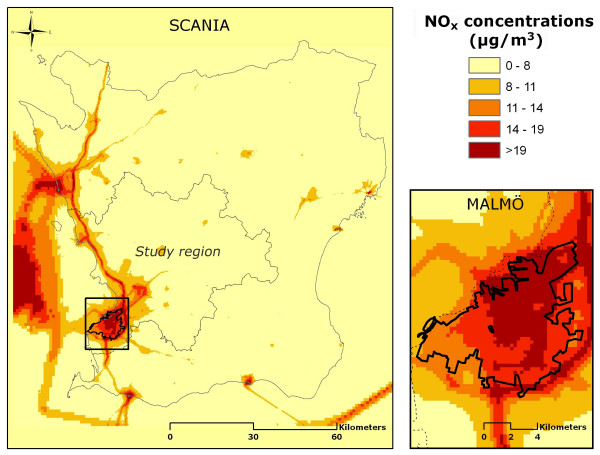
Key Quotes:
"To assess exposure to traffic, we identified the road with the heaviest traffic intensity within 100 m of the residence. Traffic intensity was categorized as 0–1 cars/min, 2–5 cars/min, 6–10 cars/min, and >10 cars/min, based upon 24-hour mean levels."
"Traffic intensity on the heaviest road within 100 m showed effects at a traffic intensity of >6 cars/min"
"In urban areas of southern Sweden, local traffic contributes approximately 50–60% of total NOx,"
"High traffic intensity, however, may not only correlate with high total number of vehicles, but also with a higher proportion of heavy vehicles, an additional factor which could affect the outcome, since diesel exhaust from heavy vehicles might have more adverse respiratory effects"
"Conclusions: Living close to traffic was associated with prevalence of asthma diagnosis, COPD diagnosis, and symptoms of asthma and bronchitis. This indicates that traffic-related air pollution has both long-term and short-term effects on chronic respiratory disease in adults, even in a region with overall low levels of air pollution."
Related articles by Zemanta
- Can smog cause asthma or does it only aggravate the symptoms (greenanswers.com)
- Ultrafine particles in air pollution may heighten allergic inflammation in asthma (eurekalert.org)
- Traffic Seems to Make Kids' Asthma Worse (nlm.nih.gov)
- What's That Cough? (lifescript.com)
- "Mediterranean diet cuts asthma risk in kids" and related posts (taragana.com)
- Asthma hospitalizations on the decline? (respiratorytherapycave.blogspot.com)

No comments:
Post a Comment